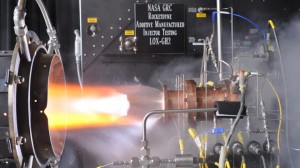

The introduction of 3D printing allows computer-designed objects to be turned into actual, useable, real-world parts. Not only does this new method save time, but it has drastically reduced the cost of producing the injector. NASA says that the part, which previously took a year to complete, can now be created using SLM in only four months, with a 70% reduction to the cost of manufacturing. Even better, after the injector was put through a series of hot fire trials last week, Aerojet’s programme manager Jeff Hayes stated that the part performed perfectly.


Sources:
BBC News, NewScientist.com, Geek.com, Space.com, MSNBC

 Laptop & Tablet Parts
Laptop & Tablet Parts




















